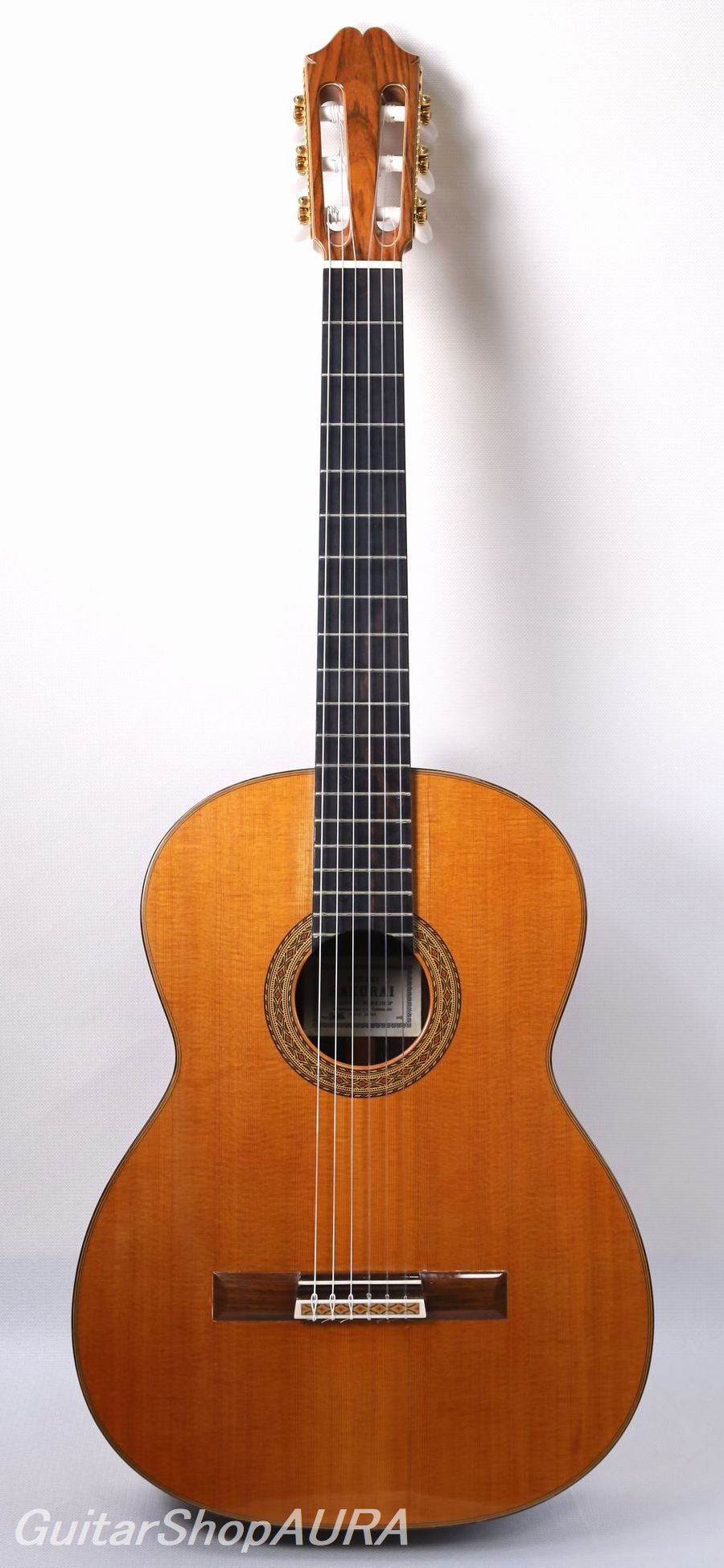
| Instrument | Masaki Sakurai |
| Category | Japanese Classical Guitars 〔Used〕 |
| Number/Model | |
| Scale length | 650mm |
| Country | Japan |
| Year | 1981Year |
| Top | Solid Ceder |
| Side&Back | Solid South American Rosewood |
| Condition※ | 6 |
| List price | INQUIRE |
| Price (tax included) | Please Inquire |
| option | with Gig Bag |
Click to enlarge the photos below
Neck: Cedro
Fingerboard: Ebony
Finish(Top): Cashew
Finish(Back & Sides): Cashew
Tuning Machines: GOTOH
String Height(1st): 2.7mm
String Height(6th): 3.5mm
[Luthier Information]
Masaki Sakurai was born in Tokyo in 1944. After graduating from the Department of Electrical and Electronic Engineering at Sophia University in 1967, he joined the Kohno Guitar Workshop, where he trained under the renowned luthier Masaru Kohno. In 1988, he won first prize at the 4th Paris International Guitar Making Competition. The model he submitted at the time later became the P.C. (Paris Competition) model, one of the most popular guitars in his lineup.
Following Masaru Kohno’s passing in 1998, Sakurai took over the workshop, continuing the Kohno legacy under the Sakurai–Kohno label, while also producing guitars under his own name, Masaki Sakurai. His instruments are renowned for their precise craftsmanship, use of premium tonewoods, and elegant aesthetics. Especially notable is their outstanding playability and stability, which are well-suited to the physical preferences of Japanese players and have earned him international acclaim equal to that of his mentor.
In later years, Satoshi Kimishima, Masaru Kohno’s grandson, joined the workshop, trained under Sakurai, and began producing guitars under his own label in 2021. With the addition of this promising younger generation, the workshop established a robust and evolving production system.
Masaki Sakurai passed away in July 2025 at the age of 81.
[Instrument Information]
Masaki Sakurai No.305 (1981) – Used
This instrument dates from the early period of Sakurai's career, prior to his international recognition in 1988. While still under the guidance of his mentor Masaru Kohno, Sakurai had already inherited a deep understanding of guitar construction, and this piece reflects a high level of craftsmanship comparable to his later works. It offers a clear sense of the distinctive tonal character that would come to define the Sakurai brand.
The soundboard is crafted from cedar, with Central/South American rosewood used for the back and sides—a high-spec combination that was likely among the top-tier offerings in his lineup at the time.
Internal Bracing Structure
The top features a unique bracing pattern:
One harmonic bar above the soundhole (towards the neck),
Two asymmetrical harmonic bars below (towards the bridge),
A surrounding reinforcement plate over 3mm thick around the soundhole.
The fan bracing includes six braces—three on the treble side and two on the bass side, divided by a central brace, arranged almost in parallel.
A reinforcement plate spans the full width beneath the bridge.
Just below that, a low and narrow bar runs within the area of the six fan braces.
At the lower bout, a closing bar supports the ends of the fan braces (with one brace continuing past it to the bottom edge).
In total, six fan braces intersect perpendicularly with five horizontal bars, forming a simplified version of the lattice-style design that would later appear in both Sakurai and Kohno models.
All braces and bars vary in size and height, showcasing the brand’s signature attention to balanced acoustic response. The main resonance is tuned between G and G#.
[Condition]
Top:
Crack repairs along both sides of the fingerboard; the treble-side repair is reinforced with an internal patch.
Two additional crack repairs near the bridge, also reinforced internally.
Entire top has been recoated or refinished with cashew lacquer.
Back and Sides:
Original finish, with no cracks or repairs.
Some minor clouding of the finish, along with light abrasions from contact with clothing. Overall, in clean and well-maintained condition.
Playability:
Neck is a standard D-shape, with no warping or issues.
Fret condition is good.
String height at the 12th fret: 3.0mm (1st string) / 4.0mm (6th string).
Saddle has 2.5–3.0mm of adjustment remaining, allowing for further customization to player preference.